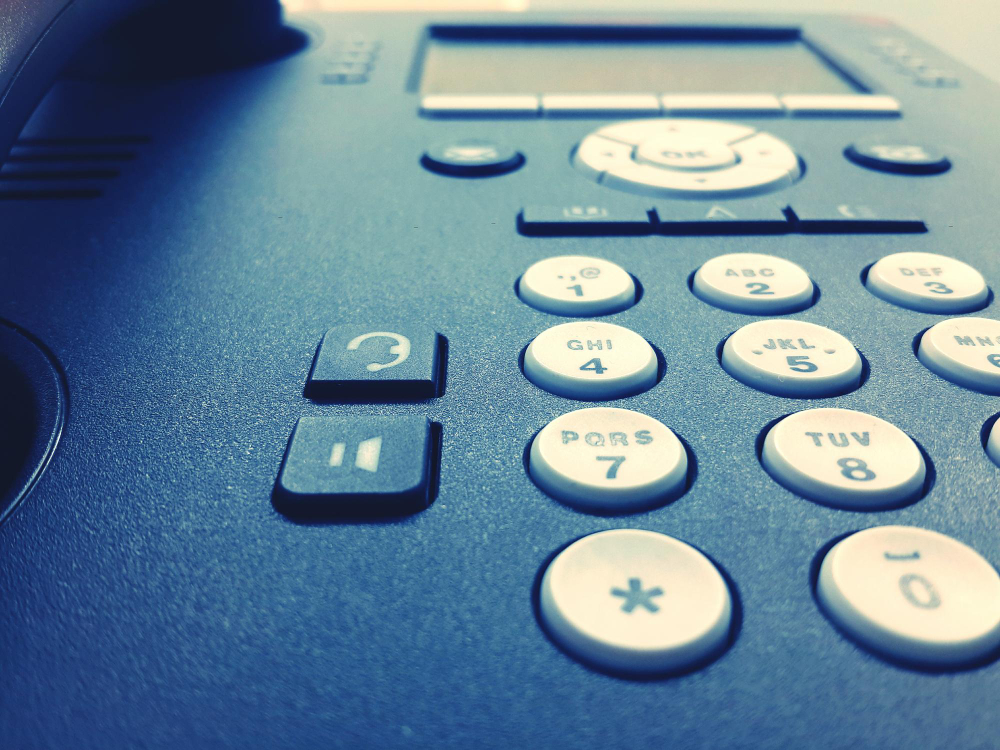When relocating your business to a new location, one major problem businesses face is changing their phone number. A simple phone number can tie down to a specific location, making you unable to connect to your old customer when relocating. VoIP number porting is the solution to your telecommunication freedom.
By transferring your existing phone number to a VoIP service, you can enjoy the flexibility of making and receiving calls from anywhere with an internet connection. This handy service allows you to keep your existing phone number even when switching from a traditional landline to a modern VoIP provider.
But how do you initiate stress-free VoIP number porting? The steps are simple and easy to follow. In this article, we explore number porting, which is specifically tailored for businesses.
Key takeaways
VoIP number porting is the process of transferring your phone number from one VoIP provider to another VoIP system.
Number porting helps to maintain the same old phone number even if your business shifts to a new place or if you want to change your current VoIP provider.
With coordination between the current and new providers, you can port your number easily. The process takes about 15 business days to complete.
What is VoIP Number Porting?
VoIP number porting is the process of transferring an existing phone number from one telecommunication service provider to another. It enables businesses to maintain their current phone number while switching to different VoIP services for their communication needs.
VoIP number porting simplifies the transition process for businesses by preserving their established phone numbers. At the same time, it ensures smooth communication with clients and partners during relocations or changes in service providers.
How does the VoIP Number Porting work?
VoIP number porting is a simple process that starts with informing your new provider of your desire to transfer your old phone number. They’ll check if your number is eligible, including local, mobile, or freephone numbers. You’ll need a Letter of Authorisation (LOA) granting permission to your new provider to initiate the porting process.
Once you provide the LOA, your new provider creates a Local Service Request (LSR) to instruct your old provider to start porting your number. The LSR is sent to your old provider’s Competitive Local Exchange Carrier (CLEC).
Your old provider reviews the request and, if everything’s in order, issues a Firm Order Commitment (FOC) with a porting date. During the 8-15 business days it takes for completion, maintain your old service to avoid disruptions.
After the transfer, test your new number for functionality before cancelling your old service. This straightforward process will ensure continuity in communication during your transition.
Want to enjoy the benefits of a VoIP number? Switch to the provider trusted by thousands for over 12 years. Contact NSWIT Support. Our extensive experience in the VoIP industry provides reliable and smooth communication solutions that meet your needs.
Requirements for Number Porting
Meeting specific requirements is essential for a successful transfer of a phone number without any complications. Below are the requirements that need to be followed when porting a number.
- Active Service: The number you want to port must be currently active with your existing service provider.
- Proof of Ownership: Documentation proving that you own the phone numbers they wish to port. This may include recent phone bills or other official communications from the current service provider.
- Account Information: Information about the customer’s current account with the old service provider, including account numbers and any PINs or passwords required to access the account.
- Eligibility Verification: Verification that the phone numbers are eligible for porting according to regulatory guidelines and industry standards. For example, numbers must typically be active and in good standing with the current provider to be eligible for porting.
- Service Address Confirmation: Confirmation of the service address associated with the phone numbers being ported. It ensures that the ported numbers are associated with the correct customer and location.
- Porting Fees: While some providers offer free number porting, others may charge a fee for this service. Check with your new provider for any associated costs.
- Technical Compatibility: Ensure that your number is compatible with the new service provider’s network and that no technical limitations are preventing the port.
6 Steps to Transfer your existing number to a new VoIP Provider
Now that you have everything ready, it’s time to begin the process of number porting. In this section, we will outline the six steps you need to follow to ensure a seamless transition of your number to the new VoIP provider.
Eligibility of Number Portability
While you want your number to be ported, what if your number is not eligible? Start by confirming if your current phone number is eligible for transfer to a new VoIP provider.
According to the ACMA, local numbers (starting with 02, 03, 07, and 08), mobile numbers (starting with 04, including prepaid services), freephone numbers (starting with 1800), local rate numbers (starting with 13 and 1300) are portable numbers. While some non-geographic numbers and special numbers are not portable
So, it is necessary to verify beforehand. The VoIP service provider will check factors like the type of number, geographic location, and regulatory considerations before determining porting eligibility. They will then let you know whether the number can be transferred.
Contact Your New VoIP Provider
When you decide to change your VoIP service, the first thing to do is contact your new VoIP providers about your intention to port your old phone number. They will provide you with detailed instructions on how to proceed and may require you to fill out specific forms or provide documentation.
Create a Letter of Authorisation(LOA)
After the number is evaluated, it is time to arrange the paperwork. You must gather all the required information and fill out the letter of authorisation form. The form requires:
- Your name, billing address and current phone number
- The name of your new service provider
- Your new VoIP phone numbers
- The name of your old service provider
- Your account number with the old service provider
- Your account PIN, if applicable
- A copy of your current phone bill or invoice
Once the information is collected, you create a LOA consisting of your personal information. Also, include the account number, if applicable. Sometimes, your provider can give you a template for the LOA; in such cases, ensure that you review all the paperwork carefully.
Submit Porting Request
Once you have all the required information, submit a formal porting request to your new VoIP provider. They’ll initiate the transfer process by contacting your old provider on your behalf.
The porting process typically takes around 8-15 business days to complete, so be prepared to wait patiently for the transfer to be finalised. However, some numbers, like toll-free numbers, take up to 21 days to port.
Maintain Communication
Throughout the porting process, it’s important to stay in touch with both your current and new VoIP providers. Keep them informed of any updates or changes and promptly respond to any requests for additional information. This open communication ensures a smooth transition and allows for any necessary coordination between the two providers.
Test and Confirm
After the arrival of your new phone number, it’s time to test if the transferred number is functioning correctly. It involves making and receiving calls to ensure the issues with connectivity and call quality.
Once you have verified that everything is working as expected, you should cancel the old phone service. If you delay the cancellation, you might be charged two phone bills at the end of the month.
Also Read:
- How to Improve VoIP Call Quality? 10 Best practices
- Top 9 Common VoIP Problems & ways to Troubleshoot Them
Potential Challenges during the Number Porting
Various reasons can affect the number porting process. Understanding these challenges is essential, as it helps to make the process smoother.
Disconnected Number
During the porting process, if your old number is disconnected by the current VoIP provider due to issues like unsettled accounts, it becomes a barrier that delays porting and increases the chances of losing the number.
Keep your old phone services active and coordinate with providers until the new service is active.
Account issues with the old VoIP provider
Before switching from your old provider to a new one, it’s essential to close your service account with the old provider. If your account has outstanding balances, the current provider may hinder the porting process.
It can lead to additional restrictions and service interruptions that disrupt your business’s communication. To avoid these issues, ensure that all outstanding balances are settled with your old provider before initiating the porting process.
Ready to get a VoIP number for your business? NSWIT Support is dedicated to providing reliable and tailored communication solutions. Contact us today to take the next step towards a better communication system.
Geographic Restrictions
Porting an existing telephone number is difficult when you move to a new rate centre. The number is associated with specific geographic areas, which can delay the process.
However, if the VoIP provider has an interconnect agreement with the telephone carrier that currently holds the phone number, it is possible to port the number.
Incorrect information
When you fill out the information in LOA, you are required to include all accurate information. Incorrect information can lead to a delay or error in the porting process.
Before submitting the form, double-check all the details, such as phone numbers, billing addresses, and other required documentation. If incorrect information is submitted, it is necessary to rectify it as soon as possible. Contact the new provider to update the information and prevent any complications.
Conclusion
Business VoIP number porting offers a streamlined solution for maintaining communication continuity during a transition period. To port your number, you will need to prepare the required documents and inform your VoIP provider. Additionally, you will need to meet certain requirements, such as clearing any outstanding balances, providing accurate information, and signing the necessary documentation.
The VoIP number porting represents a strategic investment in maintaining business continuity and preserving established communication channels. By embracing this process, businesses can transition smoothly while harnessing the full potential of advanced communication technologies.
Ready to make a switch to VoIP? NSWIT support is here to help you. Contact our team so we can set up a meeting to help you guide through the VoIP process.










